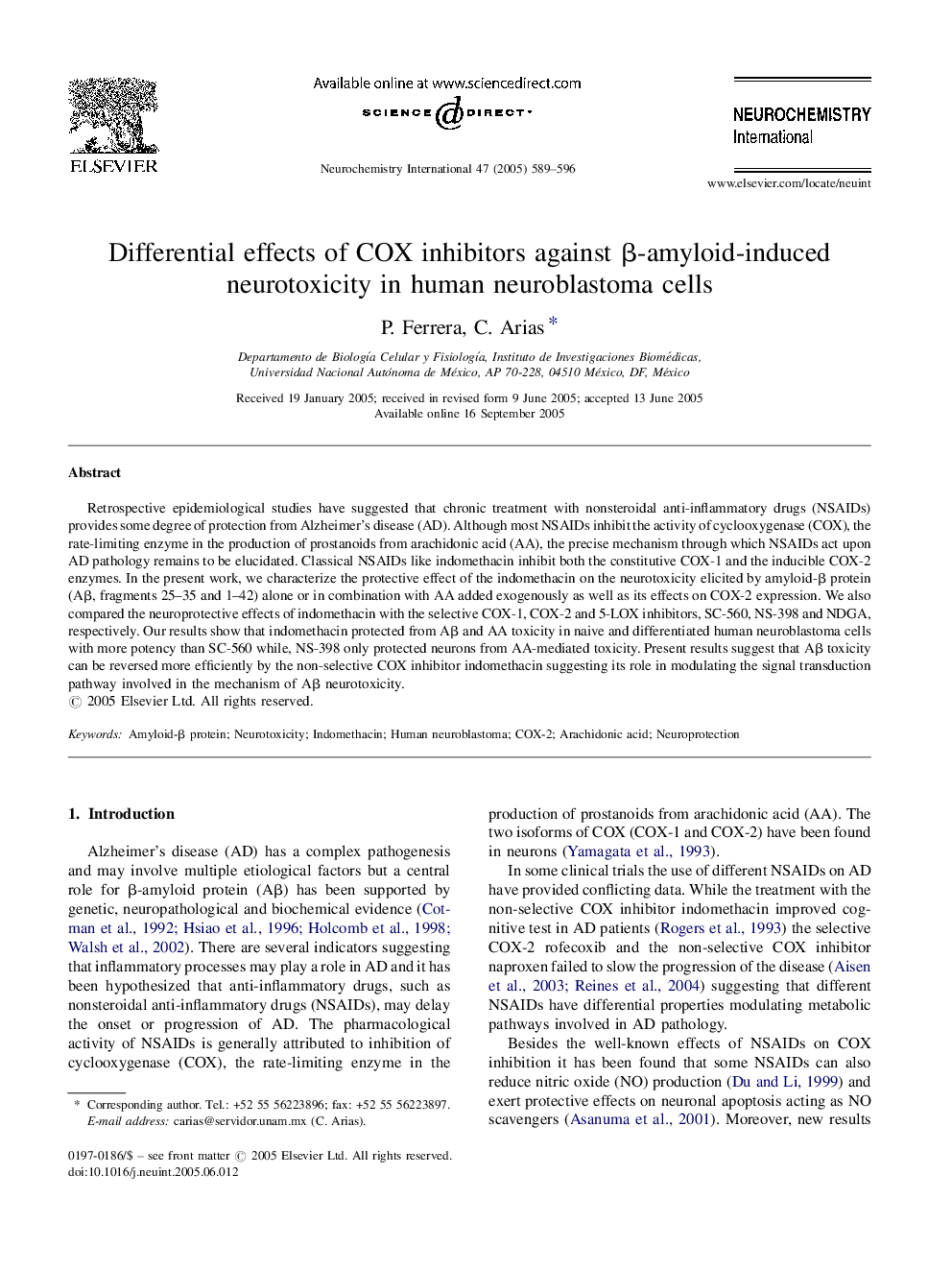| Article ID | Journal | Published Year | Pages | File Type |
|---|---|---|---|---|
| 10958435 | Neurochemistry International | 2005 | 8 Pages |
Abstract
Retrospective epidemiological studies have suggested that chronic treatment with nonsteroidal anti-inflammatory drugs (NSAIDs) provides some degree of protection from Alzheimer's disease (AD). Although most NSAIDs inhibit the activity of cyclooxygenase (COX), the rate-limiting enzyme in the production of prostanoids from arachidonic acid (AA), the precise mechanism through which NSAIDs act upon AD pathology remains to be elucidated. Classical NSAIDs like indomethacin inhibit both the constitutive COX-1 and the inducible COX-2 enzymes. In the present work, we characterize the protective effect of the indomethacin on the neurotoxicity elicited by amyloid-β protein (Aβ, fragments 25-35 and 1-42) alone or in combination with AA added exogenously as well as its effects on COX-2 expression. We also compared the neuroprotective effects of indomethacin with the selective COX-1, COX-2 and 5-LOX inhibitors, SC-560, NS-398 and NDGA, respectively. Our results show that indomethacin protected from Aβ and AA toxicity in naive and differentiated human neuroblastoma cells with more potency than SC-560 while, NS-398 only protected neurons from AA-mediated toxicity. Present results suggest that Aβ toxicity can be reversed more efficiently by the non-selective COX inhibitor indomethacin suggesting its role in modulating the signal transduction pathway involved in the mechanism of Aβ neurotoxicity.
Keywords
Related Topics
Life Sciences
Biochemistry, Genetics and Molecular Biology
Cell Biology
Authors
P. Ferrera, C. Arias,
